Houston lies on the Gulf Coastal Plain only 55 feet above sea level. The city was built on marshes, forests, swamps, and temperate grasslands, dissected by bayous. The area is warm and humid, allowing plant and animal life to thrive, including many unique bird species. Discover ten common types of birds in Houston and learn about their habitats, diet, nests, and distinctive characteristics.
Cattle Egret
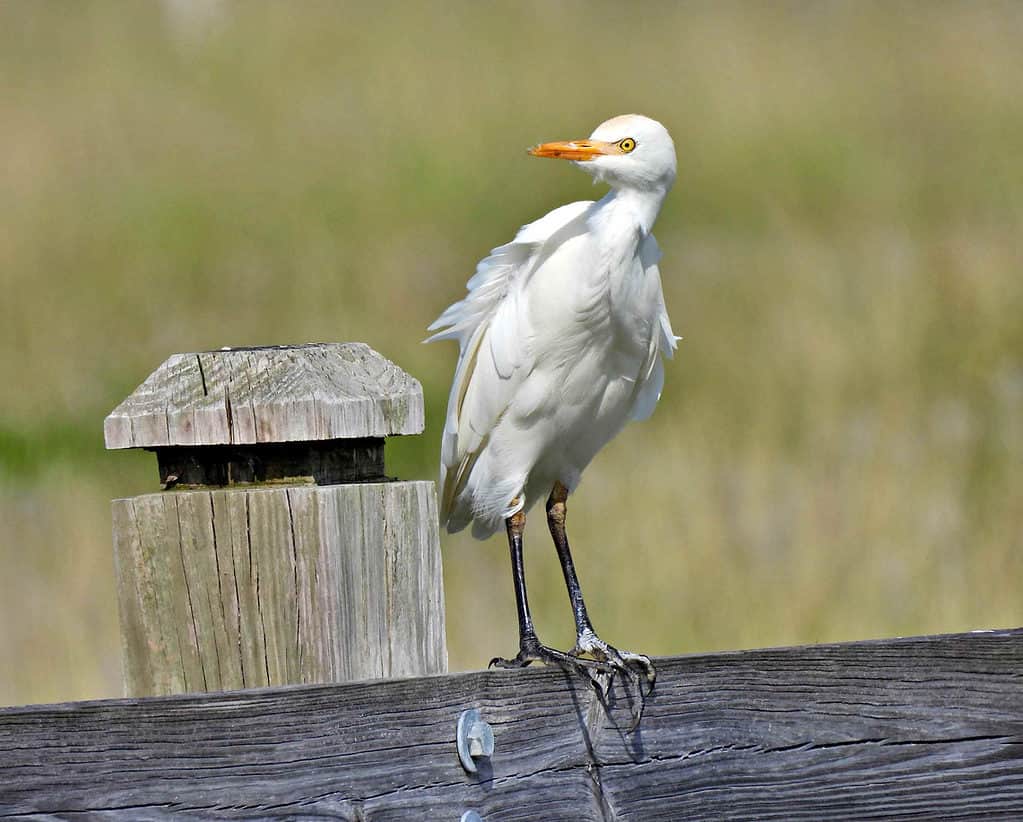
The cattle egret lives in marshes and swamps. But you can also find them on farms and open country near cattle.
©iStock.com/passion4nature
Habitat and Range: Cattle egrets are permanent residents in Houston and across the Gulf Coast. They breed in barrier islands, marshes, swamps, and winter along the coast. You will also find them near cattle on farms or in other open country.
Appearance: These egrets are compact with thick necks and relatively short legs. Their plumage is all white with golden plumes on their head during breeding. They have yellow bills and legs.
Diet: Insects, snakes, nestlings, eggs, worms, and fish
Vocalizations: Hoarse croaks
Nests: A stick platform in trees or shrubs
Mourning Dove
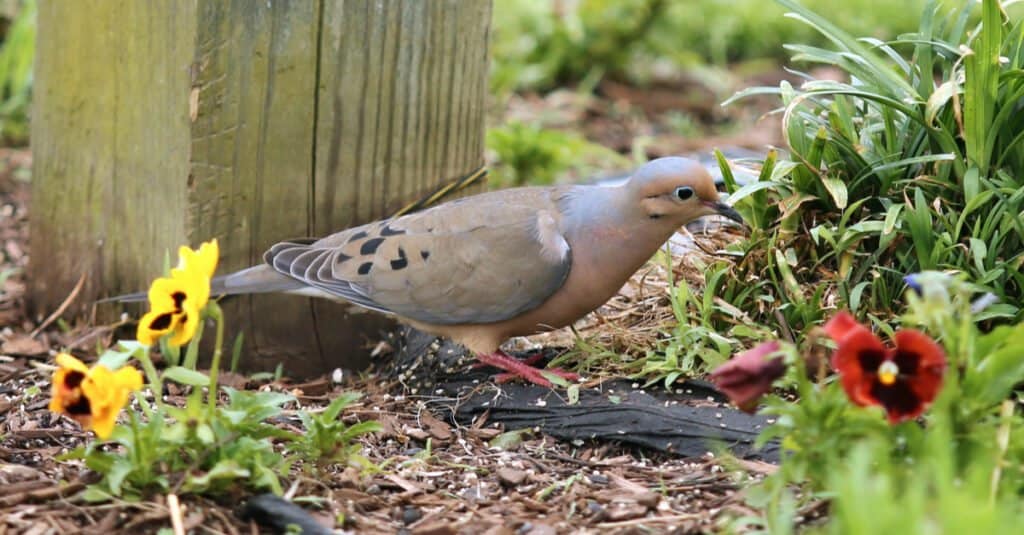
The mourning dove lives year-round in Houston, where it prefers open areas with scattered trees. Look for them foraging in fields and backyards.
©Tom Cantaffa/Shutterstock.com
Habitat and Range: Mourning doves are abundant across North America, where they live year-round in the United States, including Houston. They prefer open areas with scattered trees, where you will find them foraging on the ground in fields or backyards.
Appearance: They are plump birds with long necks, small heads, and long, pointed tails. Their coloring is brown, buff, tan, and black.
Diet: Seeds
Vocalizations: Low, mournful coos
Nests: Flimsy twig platforms in trees or shrubs
Great Horned Owl
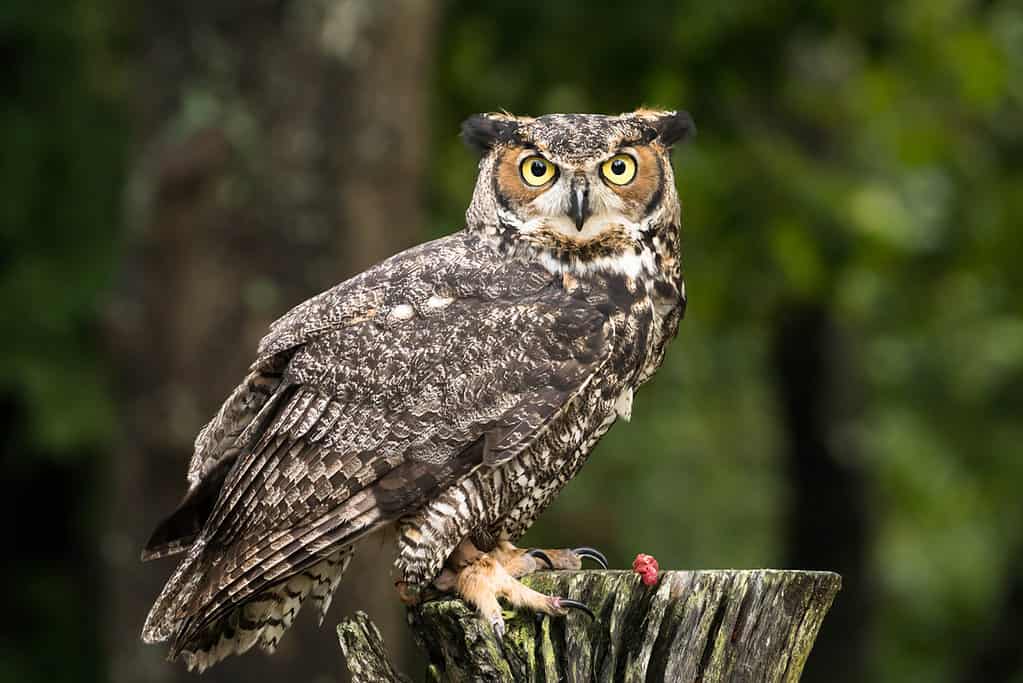
Great horned owls have a significant presence in North America. They are permanent residents in Houston, inhabiting forests, and swamps.
©iStock.com/makasana
Habitat and Range: The great horned owl covers a significant percentage of North America as a permanent resident. These large birds live throughout Texas year-round, where they inhabit almost every habitat, from forests and swamps to deserts and grasslands.
Appearance: These large, thick-bodies owls have long ear tufts and bright yellow eyes. They are mottled grayish-brown with reddish-brown face discs.
Diet: Mammals, birds, reptiles, amphibians, and insects
Vocalizations: Low, far-crying hoots
Nests: Uses abandoned nests of other large birds
Chimney Swift
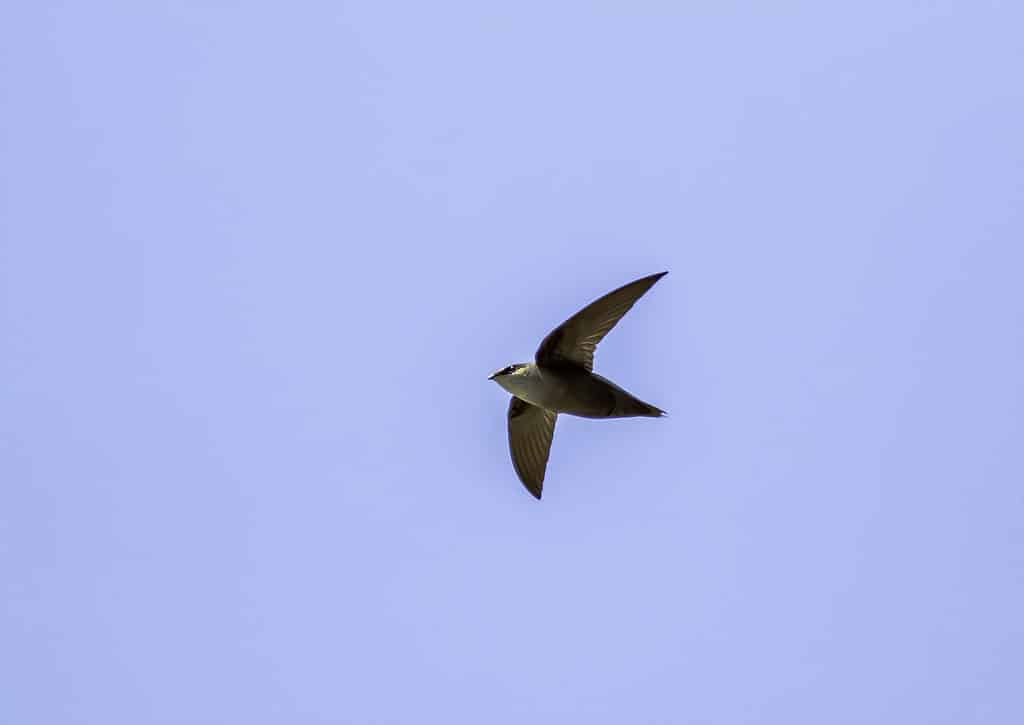
Chimney swifts are long-distance migrants with their original breeding sites in the eastern parts of the United States and southeastern Canada.
©iStock.com/Matthew Jolley
Habitat and Range: Chimney swifts breed in Eastern Texas, living near cities and towns. It is the only swift common in the east, where you can spot it foraging in the open sky. They fly over forests, ponds, and residential areas in cities and suburbs, especially those with many chimneys.
Appearance: They are small and slender with long, curved wings. Their plumage is dark grayish-brown all over but may look black from a distance.
Diet: Flying insects
Vocalizations: Loud chattering
Nests: Oddly-shaped twigs and saliva nests in chimneys or other hollow structures
Yellow-Bellied Sapsucker
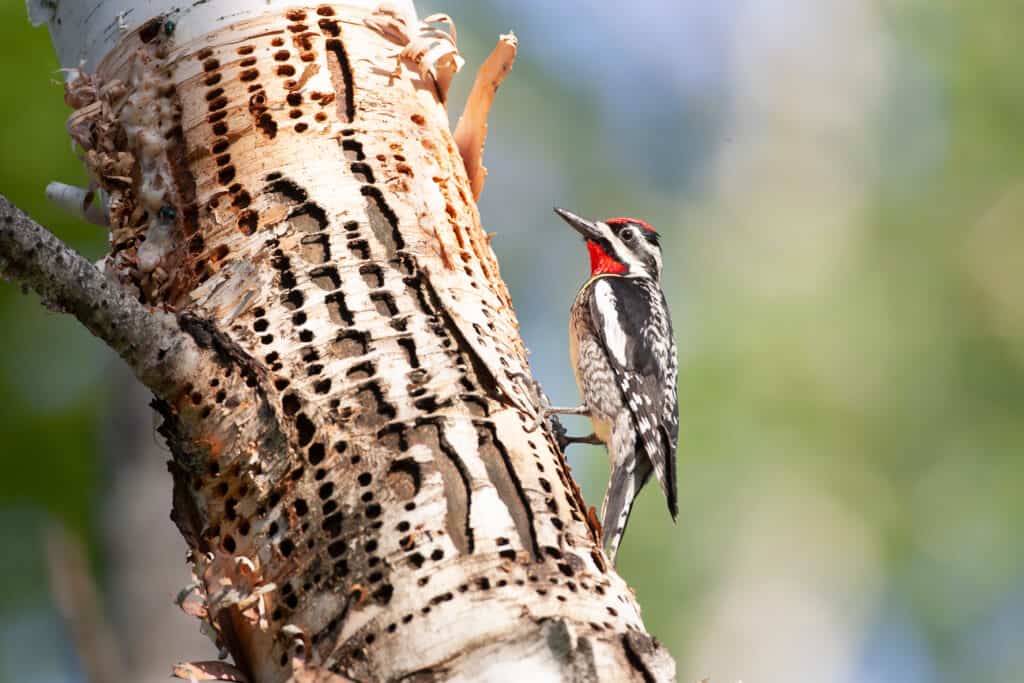
While sap is not the only thing yellow bellies eat, it accounts for a significant proportion of their diet.
©Dennis W. Donohue /Shutterstock.com
Habitat and Range: The yellow-bellied sapsucker is a common wintering bird in the Houston area. In winter, you will find them in hickory, pine, or oak forests. However, they aren’t picky about their wintering grounds and can be found from high elevations to bottomland hardwood forests. On their breeding grounds, they prefer young forests and edge habitats.
Appearance: They are small woodpeckers with broad, straight bills and red crowns and throats. The rest of their feathers are black and white.
Diet: Insects, fruits, and tree sap
Vocalizations: Nasal mewing and whining notes
Nests: Tree cavities affected by tinder fungus
Loggerhead Shrike
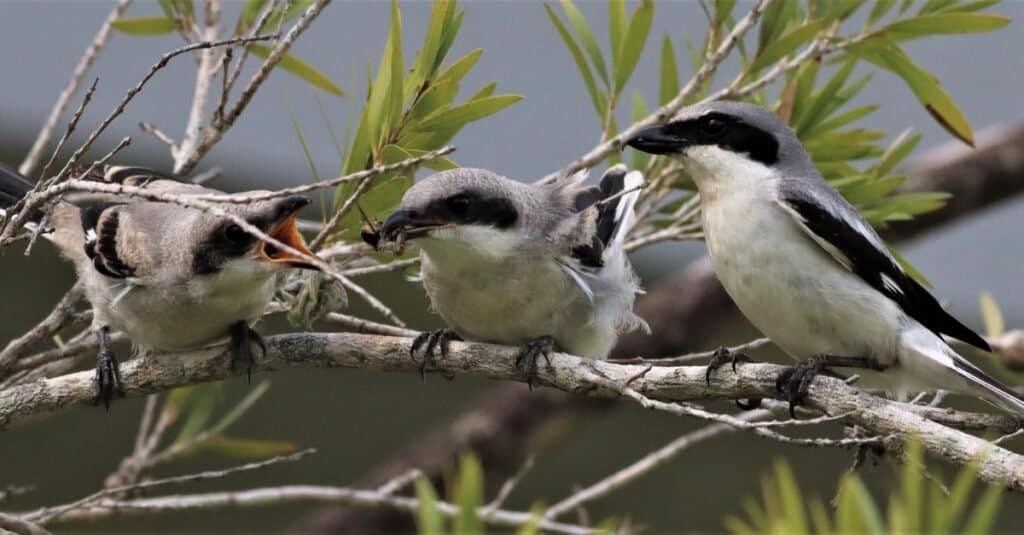
Loggerhead shrikes feature thick, hooked bills and long, rounded tails. They live permanently in Houston in wood clearings and open grasslands.
©Philip Rathner/Shutterstock.com
Habitat and Range: The loggerhead shrike lives permanently in Houston and across most of the Southern United States. Their habitats include semi-open country with perches, such as wood clearings and open grasslands.
Appearance: Chunky and blocky-headed, the loggerhead shrike feature thick, hooked bills and long, rounded tails. They are gray, black, and white birds with black eye masks.
Diet: Large insects, rodents, and small birds
Vocalizations: Musical notes and trills
Nests: A bulky twig and grass cup in well-hidden foliage
Purple Martin
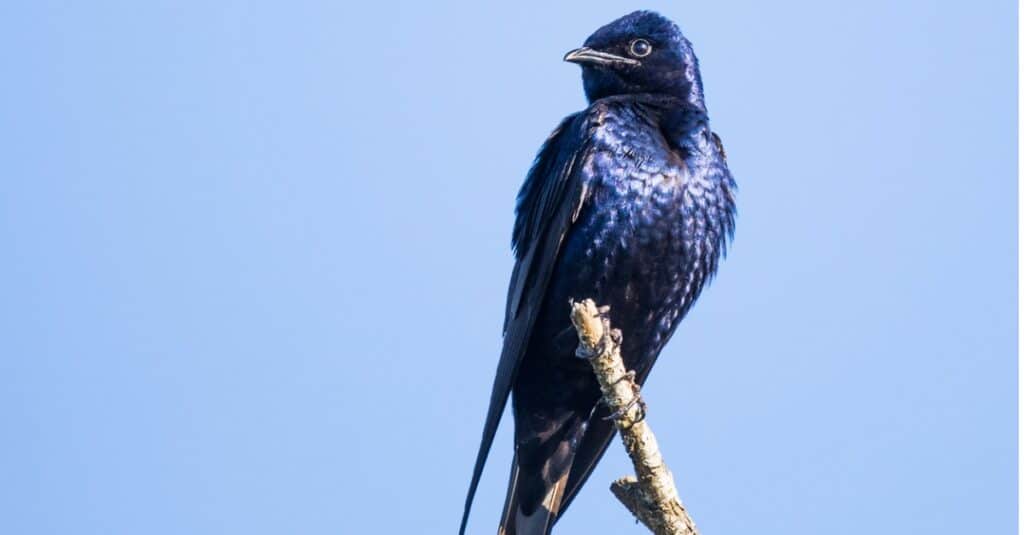
The purple martin is an acrobatic hunter, capable of catching bees while in full dive. They are large, chunky swallows with hooked bills.
©iStock.com/Jeff Huth
Habitat and Range: Purple martins are breeding birds in Houston and throughout most of Texas. Many populations have become urbanites and now use nesting boxes in cities and suburban backyards. You can also find them along forest edges and rivers.
Appearance: They are large and chunky swallows with hooked bills and long, tapered wings. They have shiny dark bluish-purple and black plumage.
Diet: Insects
Vocalizations: Throaty chirps and croak songs
Nests: Leaf and grass cups in cavities
White-Eyed Vireo
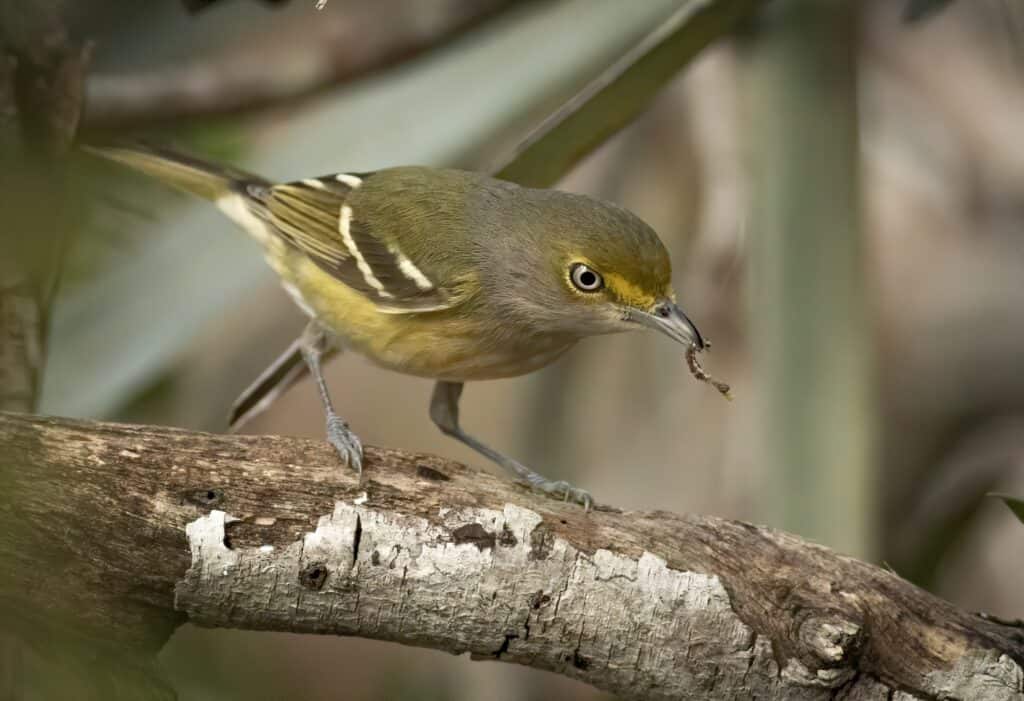
White-eyed vireo are omnivorous and eat insects, snails, and lizards as well as berries. You can find them all year in Houston.
©Matthew Jolley/Shutterstock.com
Habitat and Range: The white-eyed vireo lives permanently in Houston and along the Gulf Coast but breeds across the rest of Eastern Texas. They live in scrubby areas, such as overgrown pastures, thickets, forest edges, and second-growth forests.
Appearance: These small songbirds have thick bills and thick necks. As their name suggests, they have bright round white eyes with yellow spectacles. Their plumage is olive-green, gray, and white.
Diet: Insects, berries, and small fruits
Vocalizations: Loud, rapid sharp chips
Nests: A deep, hanging twig cup placed in low shrubs
Carolina Chickadee
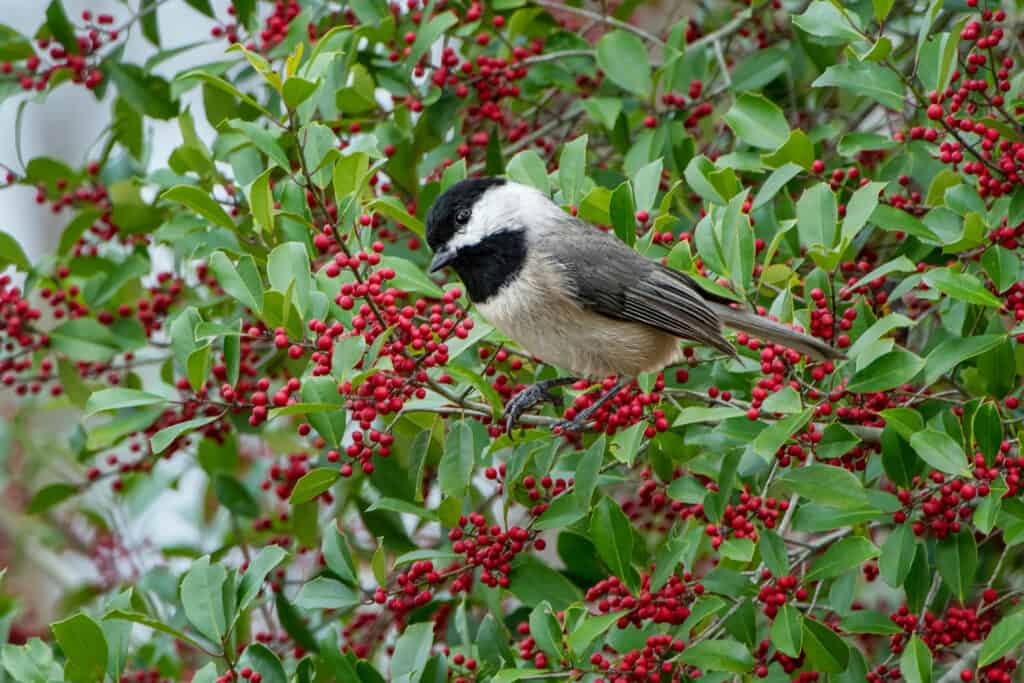
Carolina chickadees live year-round in the Southeastern United States, where they inhabit parks, open woods, swamps, woodlands, and suburbs.
©Bonnie Taylor Barry/Shutterstock.com
Habitat and Range: The Carolina chickadee is a bird of the Southeastern United States, where it lives year-round. You will find them in Northeastern Texas, including Houston. They live in a wide variety of habitats, such as parks, open woods, swamps, deciduous and mixed woodlands, river groves, suburbs, and cities.
Appearance: These tiny birds have large heads, shirt necks, and long tails. Their bodies are gray overall and their heads feature black caps and bibs with white cheeks.
Diet: Insects, seeds, berries, and small fruits
Vocalizations: Buzzy, high-pitched whistle notes
Nests: They nest inside tree cavities lined with bark strips and plant down.
Northern Mockingbird
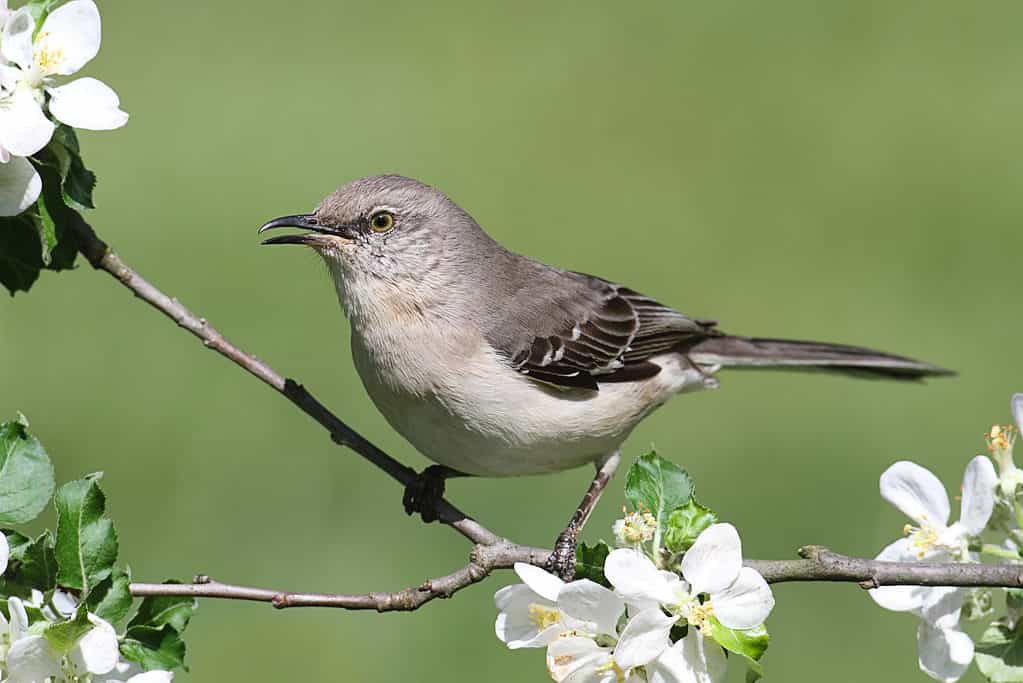
Northern mocking birds live permanently in Houston in hedges, thickets, parks, fields, farms, roadsides, and suburban lawns.
©Steve Byland/Shutterstock.com
Habitat and Range: Northern mockingbirds are permanent residents throughout most of the United States and Mexico. You will find them all year in Houston, where they are known for their endless singing. They live on open ground with shrubby plants, like hedges, thickets, and bushes. They are likely to inhabit parks, agricultural fields, farms, suburban lawns, and roadsides.
Appearance: These slender songbirds are medium-sized with small heads, thin bills, and long tails. Their plumage is grayish-brown and features distinctive white wing bars visible in-flight.
Diet: Insects, berries, small reptiles, wild fruits, and cultivated fruits
Vocalizations: Long musical phrases and imitations
Nests: A bulky twig foundation with a weed cup placed in dense shrubs or trees
The photo featured at the top of this post is © iStock.com/cmcneill17
Thank you for reading! Have some feedback for us? Contact the AZ Animals editorial team.






